





Pedestrian Footpath
Pedestrian crashes are a major road safety problem, especially in low and middle income countries. Footpaths (or sidewalks) reduce crash risk by separating vehicles and pedestrians and help to promote walking as an alternative to motorized transport.
Footpaths (or sidewalks) are created by providing space that is separated from the road for people to walk to and from home, a place of work, recreational facilities, schools, shops, and public transport. Footpaths should be provided wherever people need or want to walk along a road.
Footpaths are typically constructed from concrete and raised above the road surface with curbs but may also be constructed from asphalt, crushed stone or by covering linear drainage channels providing a stable, consistent and slip-resistant surface is created and well maintained. Footpaths should be continuous and accessible to all pedestrians including those in wheelchairs.
The safety benefit of a footpath will be greatest if the footpath is separated from the road (for example, by a drain, a grass verge or a barrier). Pedestrians also feel more comfortable to walk when there is a wide separation between traffic and the footpath, especially on higher speed roads.
In urban areas inadequate footpath space, street traders, parked cars or poor footpath surfaces can force pedestrians onto the road. Footpaths may be widened to improve access and physical barriers such as bollards to prevent parking on the footpath can be useful. In central areas, streets can be closed to vehicles for part of the day or permanently.
In rural areas where pedestrians walk along the road less frequently, a wide paved shoulder may serve as a walkway, and this can be delineated with simple kerbs or flexible posts that help separate those walking from the travel lanes. Informal footpaths can be created by using a road grader to create a flat, stabilized, unpaved walkway, though this requires regular maintenance. In areas that have large drainage channels to manage rainfall, there is often an opportunity to create a footpath by covering the drain.
- Increased safety for pedestrians.
- Improves facilities for pedestrians (improves accessibility).
- May help to increase walking as a mode of transport (environmental benefits and reduced traffic congestion).
- Walking can improve health and fitness.
- Provision of footpaths should accord with the desired route of pedestrians with respect to important origins and destinations.
- Provision of footpaths should facilitate access to public transport facilities including bus stops and bus terminus.
- Where pedestrian volume is high, a reasonable Level of Service (LOS) of footpaths should be attained to encourage usage of the footpath.
- A routine maintenance programme is needed to ensure that footpaths are kept clean and level, free from defects and to prevent vegetation from causing an obstruction.
- Signage should be used to warn drivers of pedestrians if the road shoulder is commonly used as an informal footpath.
- Street traders, public utility apparatus and street furniture should not be allowed to obstruct the footpath.
- It is recommended that consideration be given to improving accessibility for the mobility impaired. This should include design features such as paved footpaths with sufficient width to accommodate wheelchairs, dropped kerbs at pedestrian crossing points, tactile paving and improved road markings and signs.
- Interruptions by obstructions and access openings should be minimised along footpaths. Accesses to parking areas and industrial facilities could be hazardous. The risk can be mitigated by ensuring adequate visibility and highlighting the conflict area in a different colour of the footpath surface.
The Star Rating Demonstrator is a freely available tool with the iRAP online software, ViDA. With the Star Rating Demonstrator, it is possible to explore the impact that this Safer Roads Treatment has on risk.
Treatment Summary
Costs | Low to medium |
Treatment life | 10 years - 20 years |
Potential casualty reduction | 40-60% |
Case Studies
Related Images
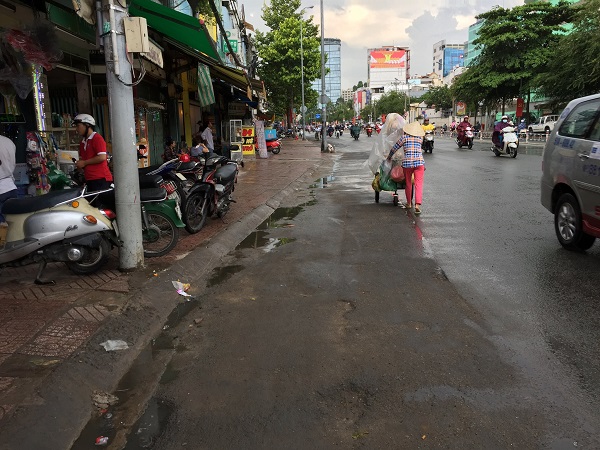 An obstructed footpath and pedestrian walking on the road. Image credit: Monica Olyslagers
An obstructed footpath and pedestrian walking on the road. Image credit: Monica Olyslagers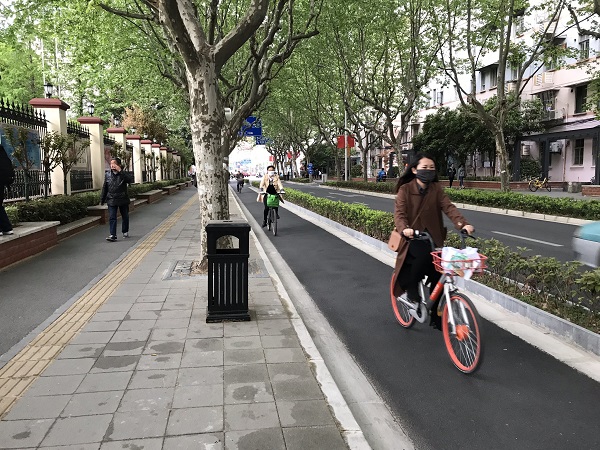 Bicycle lane and sidewalk in China. Image credit: WRI
Bicycle lane and sidewalk in China. Image credit: WRI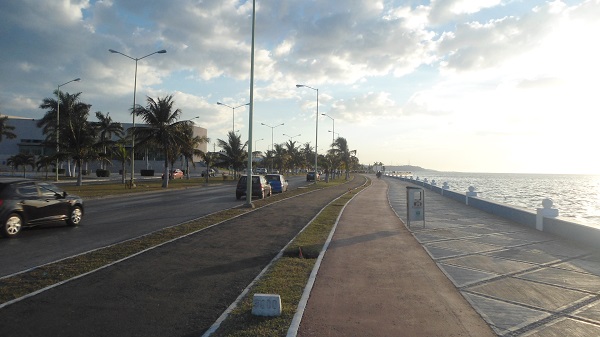 Bicycle lane and sidewalk in Mexico. Image credit: Agustin Centeno
Bicycle lane and sidewalk in Mexico. Image credit: Agustin Centeno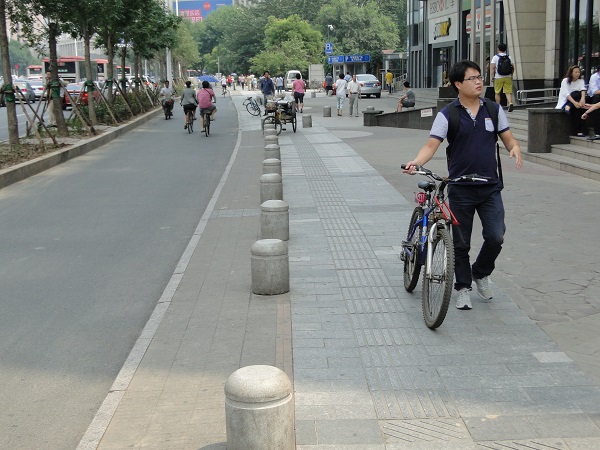 Bollards protect a sidewalk in China. Image credit: Greg Smith
Bollards protect a sidewalk in China. Image credit: Greg Smith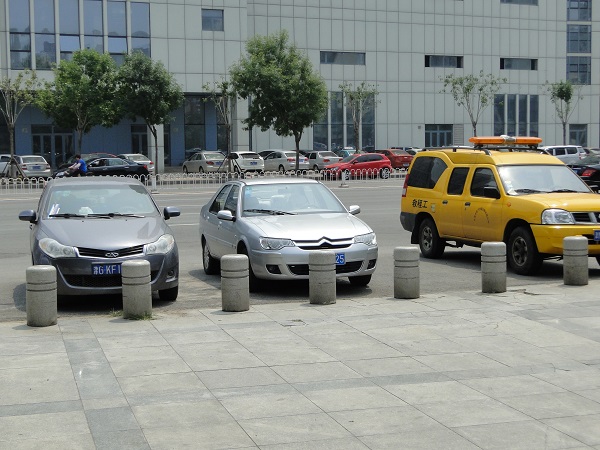 Bollards to protect the sidewalk from vehicles in China. Image credit: Greg Smith
Bollards to protect the sidewalk from vehicles in China. Image credit: Greg Smith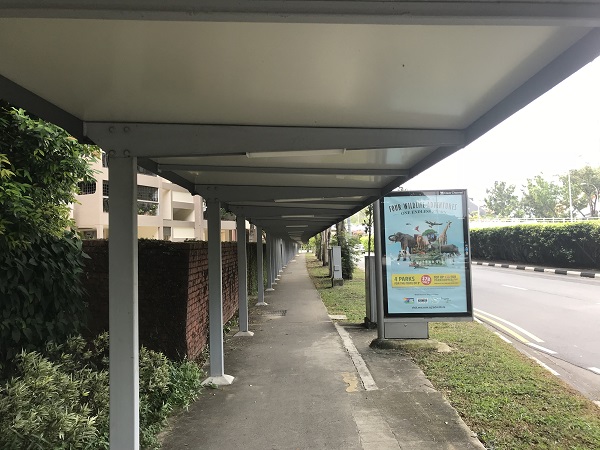 Covered footpath in Singapore. Image credit: Alina Burlacu
Covered footpath in Singapore. Image credit: Alina Burlacu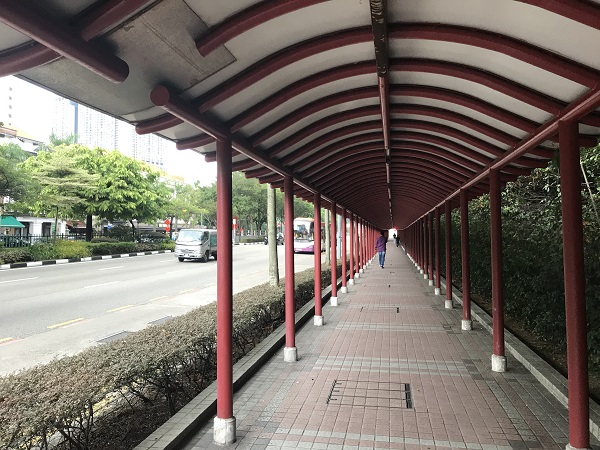 Covered footpath in Singapore. Image credit: Alina Burlacu
Covered footpath in Singapore. Image credit: Alina Burlacu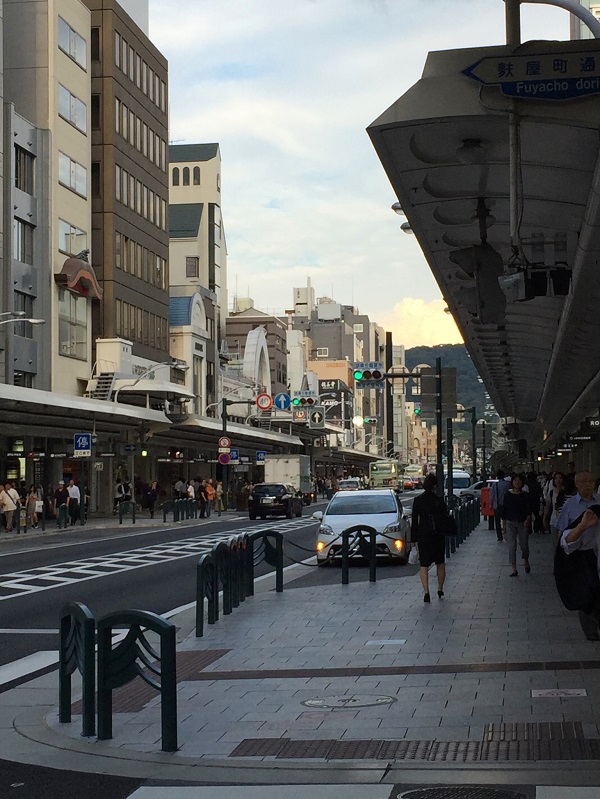 Curb buildout to narrow pedestrian crossing width and creating parking space in Kyoto, Japan. Image credit: iRAP
Curb buildout to narrow pedestrian crossing width and creating parking space in Kyoto, Japan. Image credit: iRAP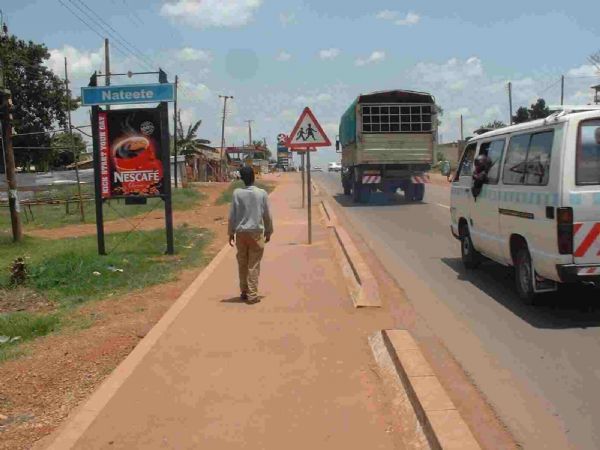 A low-cost and easy to implement pedestrian footpath in Kampala, Uganda. Even simple footpaths like this one have the potential to significantly improve safety for pedestrians. Image credit: Allan Jones
A low-cost and easy to implement pedestrian footpath in Kampala, Uganda. Even simple footpaths like this one have the potential to significantly improve safety for pedestrians. Image credit: Allan Jones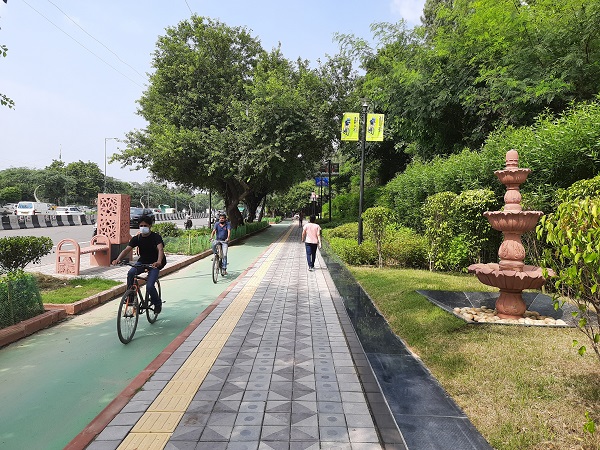 Exclusive bicycle lane and pedestrian footpath in New Delhi India. Image credit: iRAP
Exclusive bicycle lane and pedestrian footpath in New Delhi India. Image credit: iRAP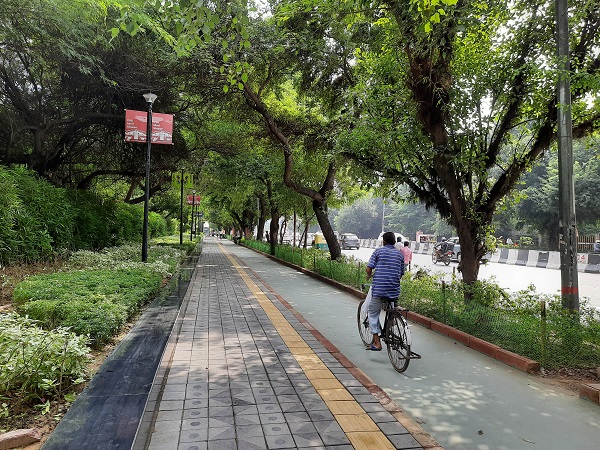 Exclusive bicycle lane and pedestrian footpath in New Delhi India. Image credit: iRAP
Exclusive bicycle lane and pedestrian footpath in New Delhi India. Image credit: iRAP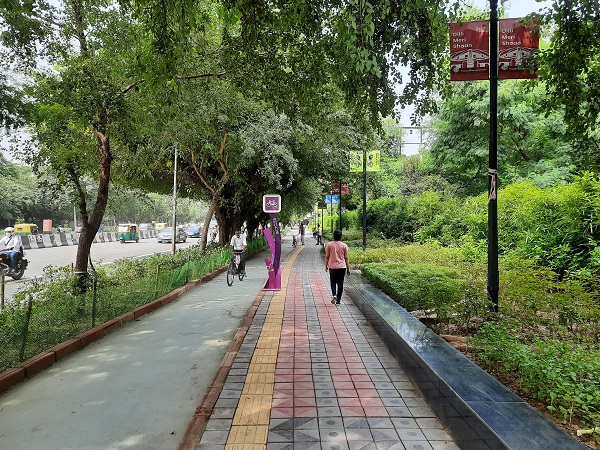 Exclusive bicycle lane and pedestrian footpath in New Delhi, India. Image credit: iRAP
Exclusive bicycle lane and pedestrian footpath in New Delhi, India. Image credit: iRAP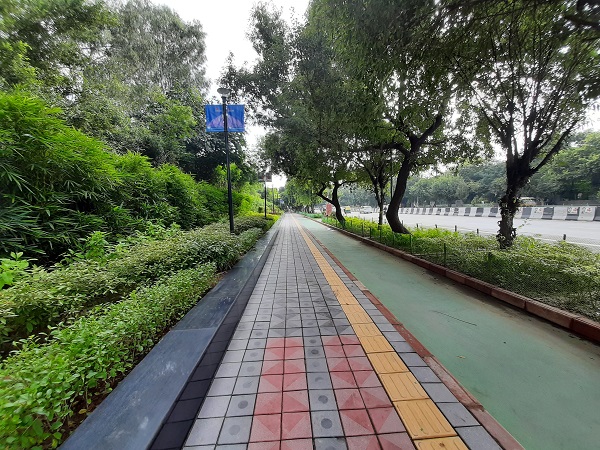 Exclusive bicycle lane and pedestrian footpath in New Delhi India. Image credit: iRAP
Exclusive bicycle lane and pedestrian footpath in New Delhi India. Image credit: iRAP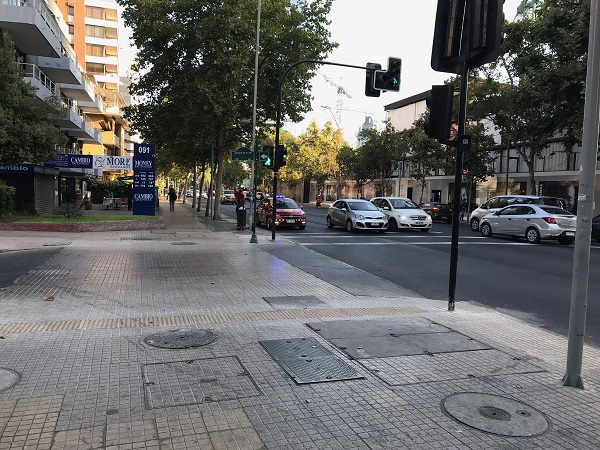 Sidewalk. Image credit: iRAP
Sidewalk. Image credit: iRAP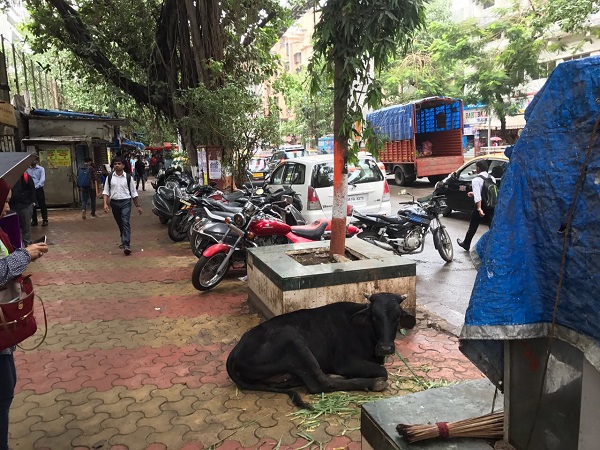 Footpath in Mumbai. Image credit: Alina Burlacu
Footpath in Mumbai. Image credit: Alina Burlacu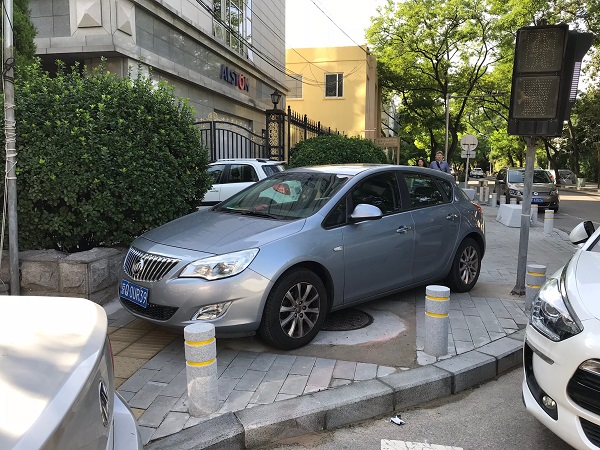 Illegal parking on a footpath in Beijing, China. Image credit: iRAP
Illegal parking on a footpath in Beijing, China. Image credit: iRAP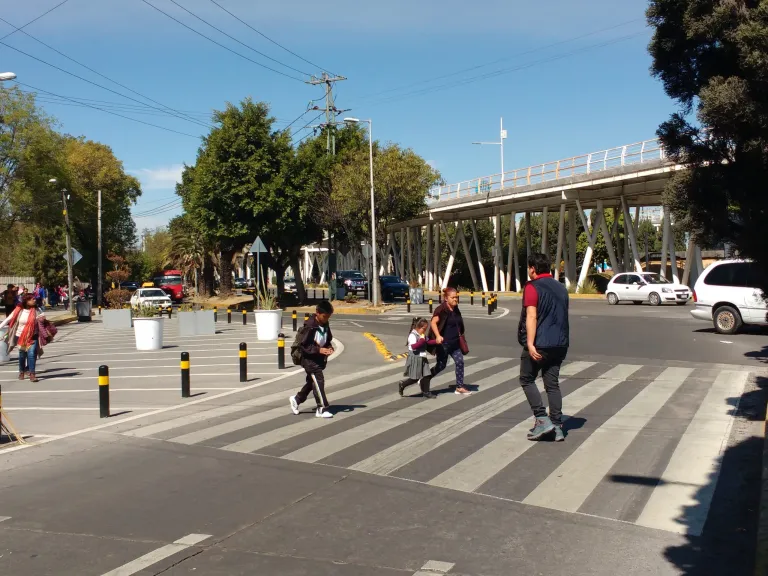 Pedestrian crossing and sidewalk at a school in Mexico. Image credit: ITDP
Pedestrian crossing and sidewalk at a school in Mexico. Image credit: ITDP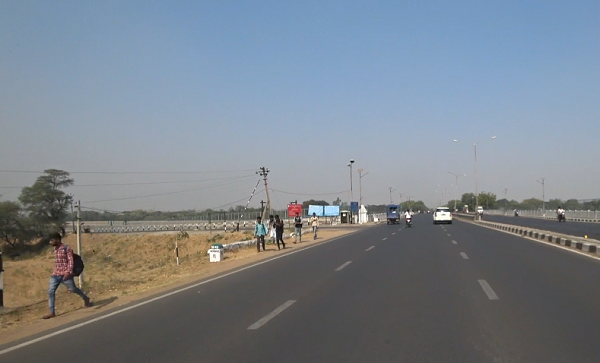 Informal footpath along a major road in India. Image Credit: IndiaRAP
Informal footpath along a major road in India. Image Credit: IndiaRAP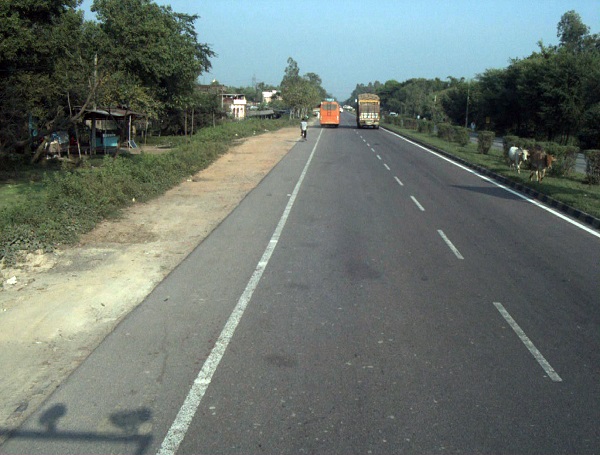 Informal footpath along a National Highway in India. Image Credit: IndiaRAP
Informal footpath along a National Highway in India. Image Credit: IndiaRAP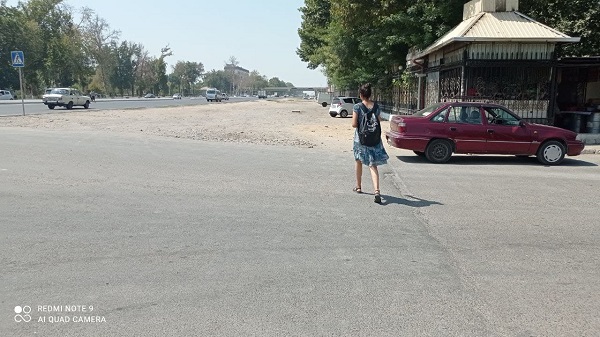 Informal sidewalk in Uzbekistan. Image credit: Anvar Matkarimov
Informal sidewalk in Uzbekistan. Image credit: Anvar Matkarimov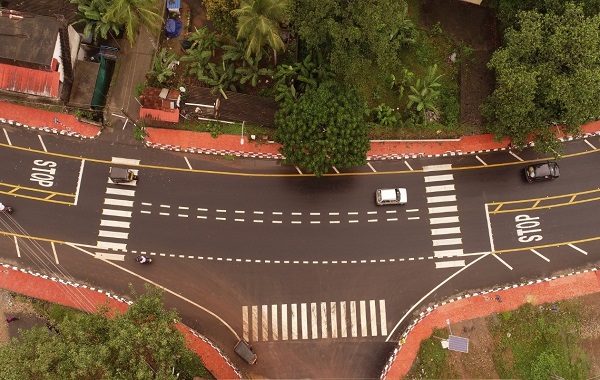 3-leg intersection with pedestrian facilities. Image credit: Kerala State Transport Project
3-leg intersection with pedestrian facilities. Image credit: Kerala State Transport Project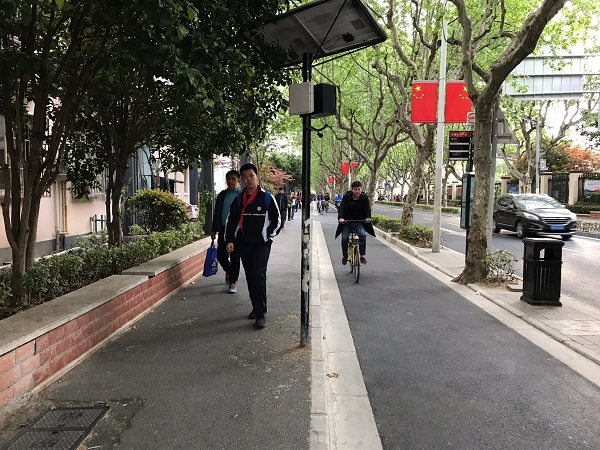 Pedestrian and bicycle facilities in Shanghai. Image credit: Unknown
Pedestrian and bicycle facilities in Shanghai. Image credit: Unknown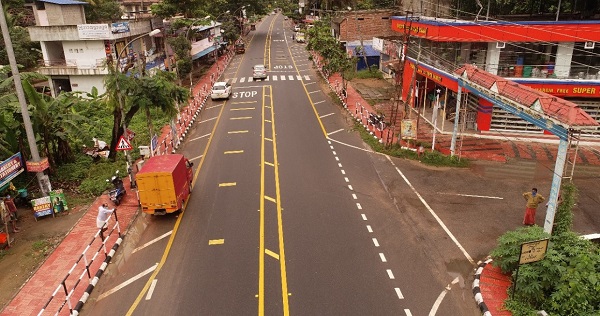 Pedestrian crossing facility with footpath, wide centreline and speed transverse markings to calm speed on a state highway in Kerala, India. Image credit: Kerala State Transport Project
Pedestrian crossing facility with footpath, wide centreline and speed transverse markings to calm speed on a state highway in Kerala, India. Image credit: Kerala State Transport Project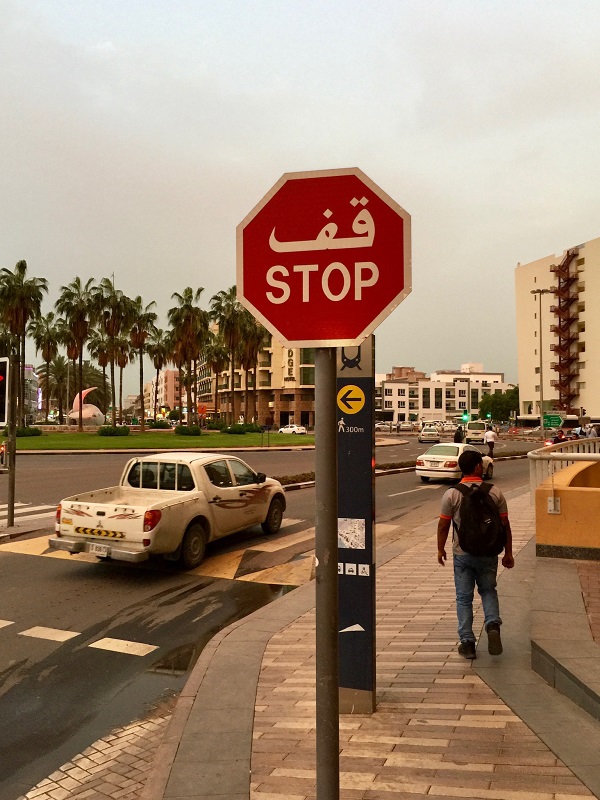 Stop sign and sidewalk in United Arab Emirates. Image Credit: iRAP
Stop sign and sidewalk in United Arab Emirates. Image Credit: iRAP Pedestrian crossing in Tokyo, Japan. Image Credit: iRAP
Pedestrian crossing in Tokyo, Japan. Image Credit: iRAP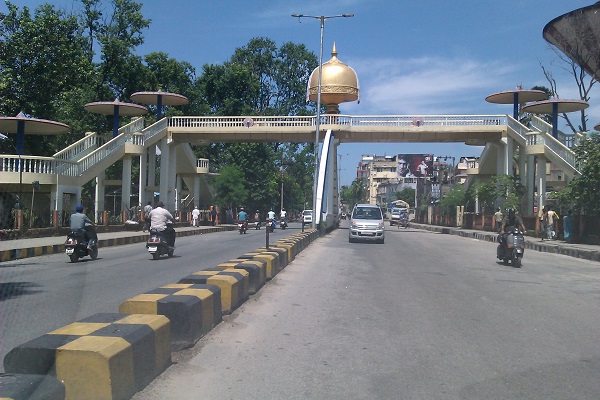 Pedestrian footover bridge in India. Image credit: iRAP
Pedestrian footover bridge in India. Image credit: iRAP Pedestrians walking on informal footpath along a rural road in India. Image credit: iStock
Pedestrians walking on informal footpath along a rural road in India. Image credit: iStock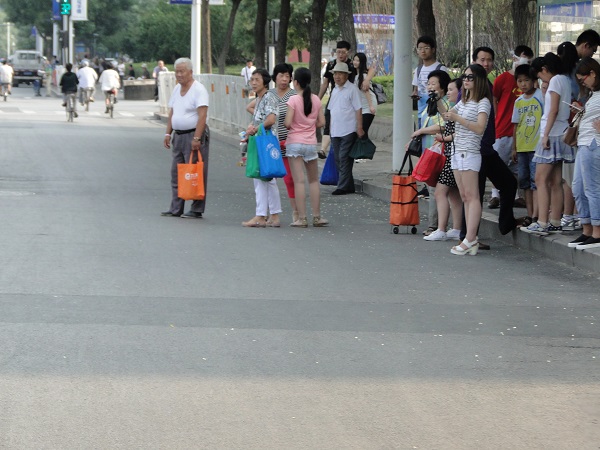 Pedestrians spill onto the road from a sidewalk that does not have enough capacity in China. Image credit: Greg Smith
Pedestrians spill onto the road from a sidewalk that does not have enough capacity in China. Image credit: Greg Smith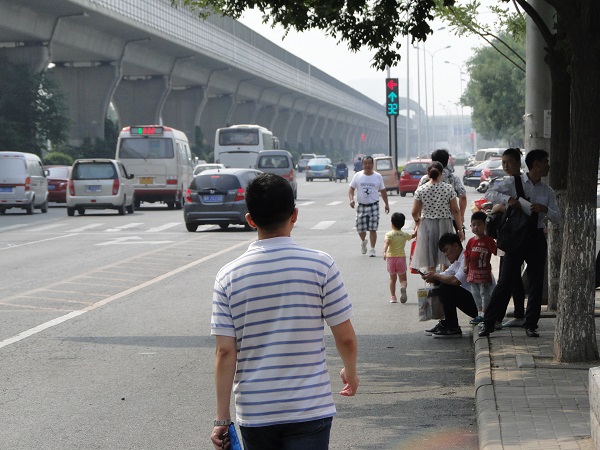 Pedestrians walk on the road because of an obstructed sidewalk, China. Image credit: Greg Smith
Pedestrians walk on the road because of an obstructed sidewalk, China. Image credit: Greg Smith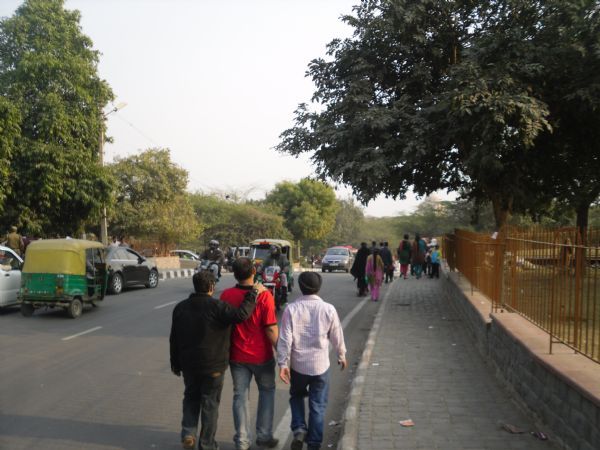 Pedestrians walking in the road despite the presence of a footpath in New Delhi, India. Image credit: Greg Smith
Pedestrians walking in the road despite the presence of a footpath in New Delhi, India. Image credit: Greg Smith Pedestrians in Tokyo, Japan. Image Credit: iRAP
Pedestrians in Tokyo, Japan. Image Credit: iRAP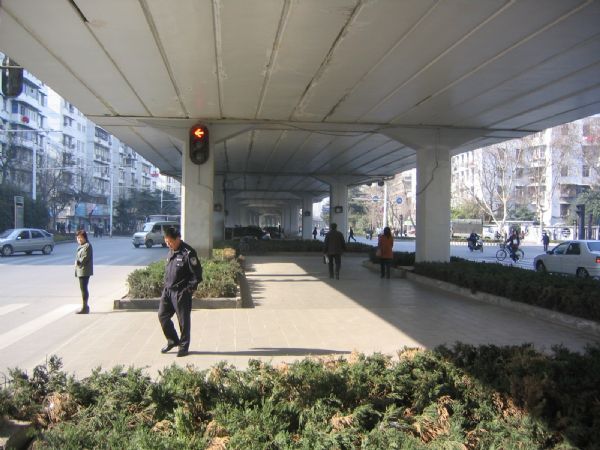 Physical channelisation (and planting) under the flyover to provide a safe refuge for pedestrians to cross the road in two stages. Image credit: Gladys Frame
Physical channelisation (and planting) under the flyover to provide a safe refuge for pedestrians to cross the road in two stages. Image credit: Gladys Frame Public transport in China (School children). Image credit: Monica Olyslagers
Public transport in China (School children). Image credit: Monica Olyslagers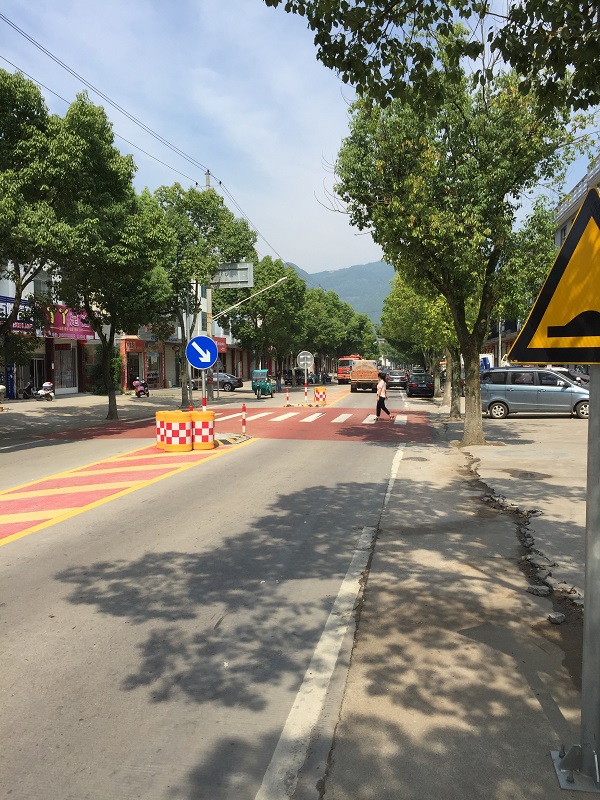 Raised pedestrian crossing in China. Image credit: Greg Smith
Raised pedestrian crossing in China. Image credit: Greg Smith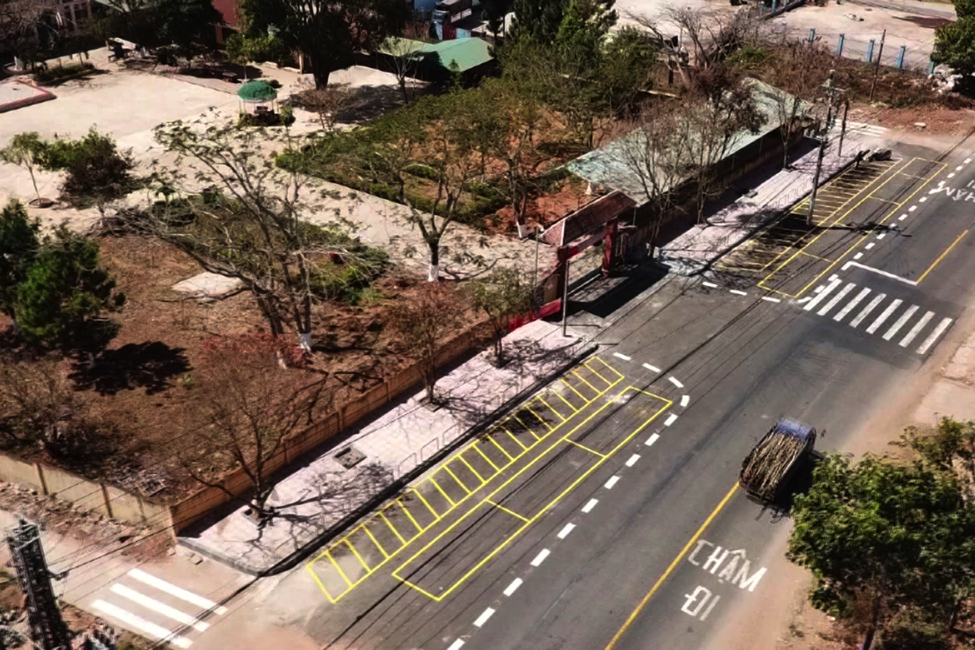 School safety improvements. Image credit: Asia Injury Prevention Foundation
School safety improvements. Image credit: Asia Injury Prevention Foundation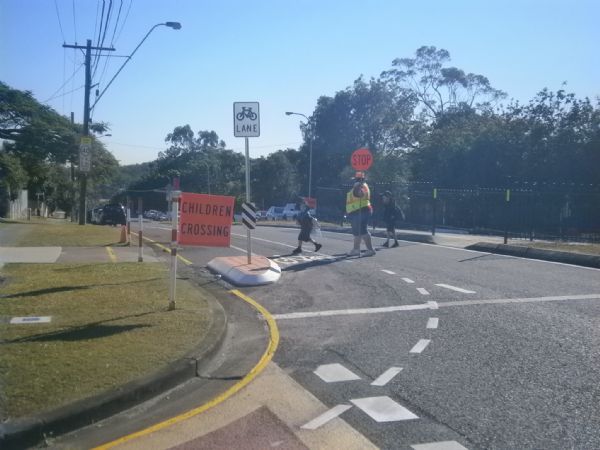 School Zone crossing supervisor in Australia. Image credit: Unknown
School Zone crossing supervisor in Australia. Image credit: Unknown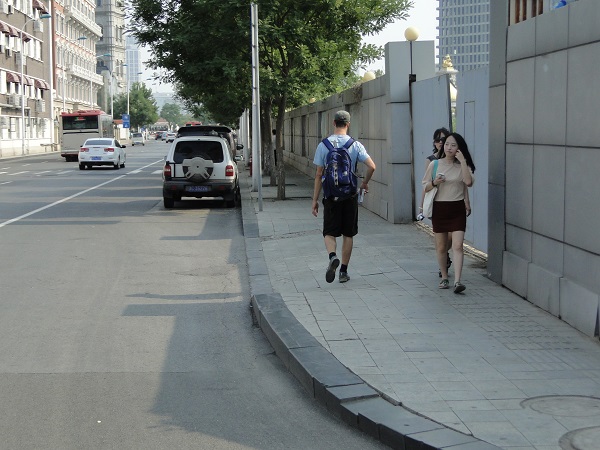 A sidewalk in China. Image credit: Monica Olyslagers
A sidewalk in China. Image credit: Monica Olyslagers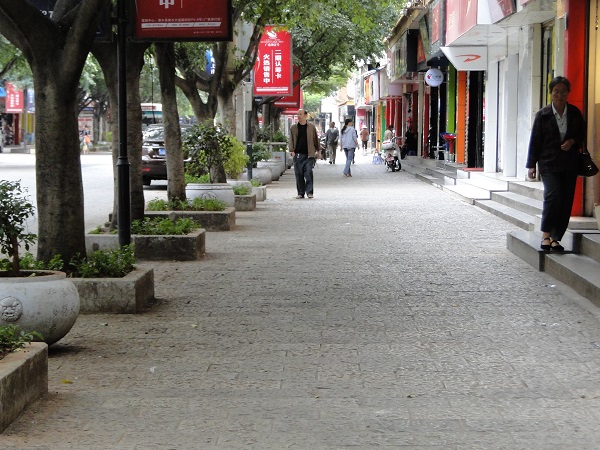 A sidewalk in China. Image credit: Greg Smith
A sidewalk in China. Image credit: Greg Smith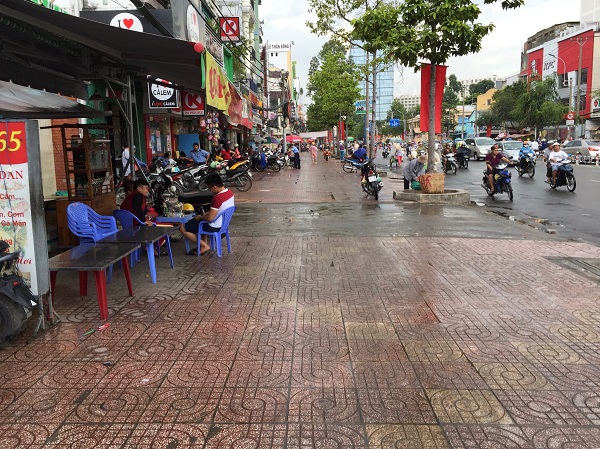 Sidewalk in Vietnam. Image credit: Monica Olyslagers
Sidewalk in Vietnam. Image credit: Monica Olyslagers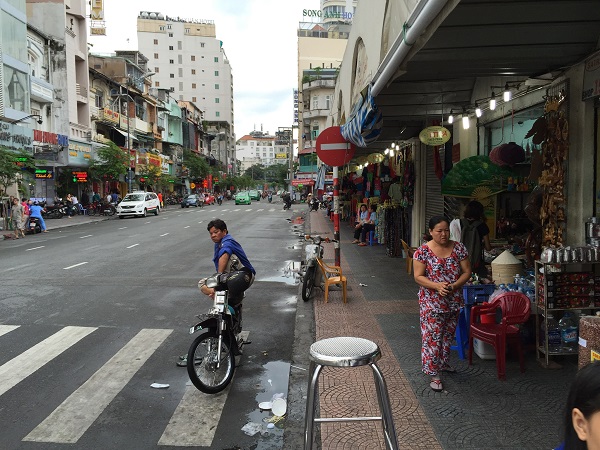 Sidewalk in Ho Chi Minh City, Vietnam. Image credit: Monica Olyslagers
Sidewalk in Ho Chi Minh City, Vietnam. Image credit: Monica Olyslagers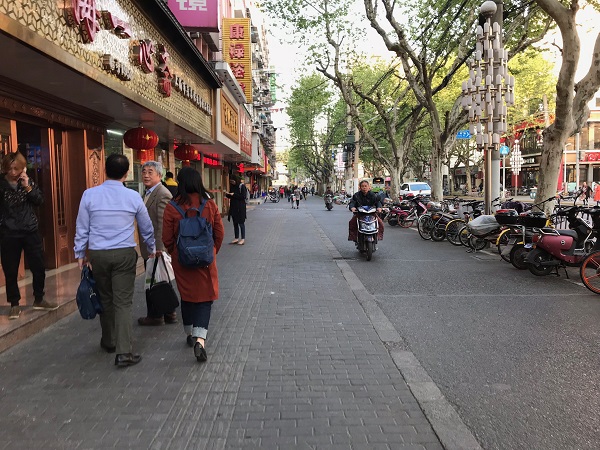 A sidewalk in Shanghai, China. Image credit: Monica Olyslagers
A sidewalk in Shanghai, China. Image credit: Monica Olyslagers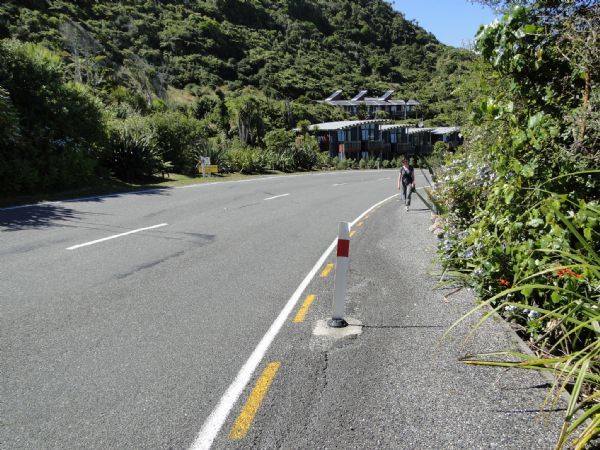 Simple pedestrian footpath in a semi-urban area of New Zealand. Image credit: Greg Smith
Simple pedestrian footpath in a semi-urban area of New Zealand. Image credit: Greg Smith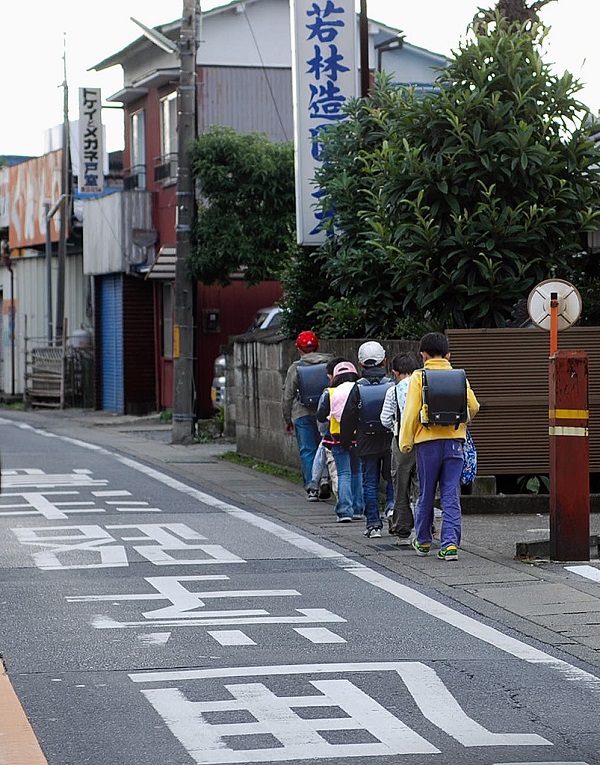 Narrow sidewalk in Japan. Image credit: Michael Martin
Narrow sidewalk in Japan. Image credit: Michael Martin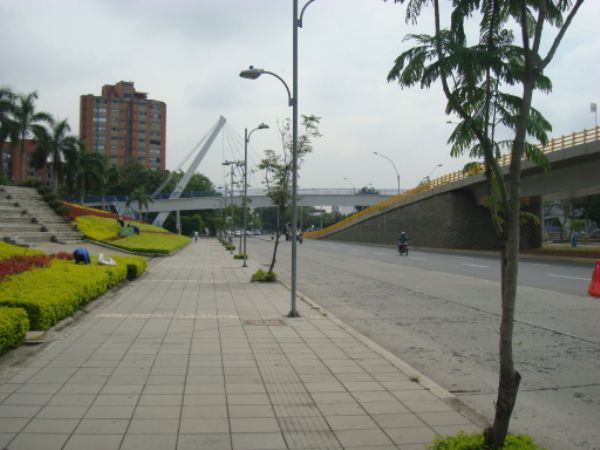 Street lights and sidewalk in China. Image credit: Greg Smith
Street lights and sidewalk in China. Image credit: Greg Smith Low cost footpath in Uganda. Image credit: Allan Jones
Low cost footpath in Uganda. Image credit: Allan Jones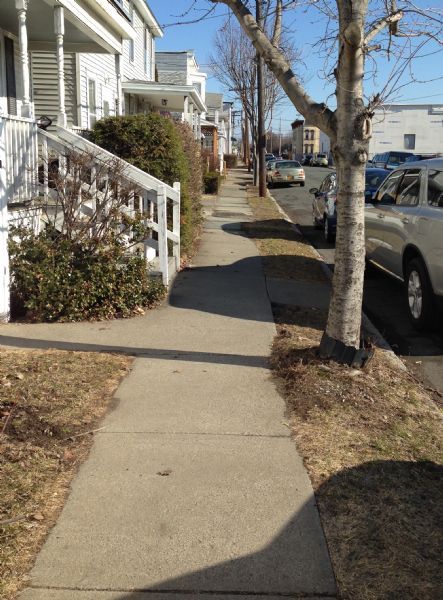 Suburban sidewalk in the USA. Image credit: Unknown
Suburban sidewalk in the USA. Image credit: Unknown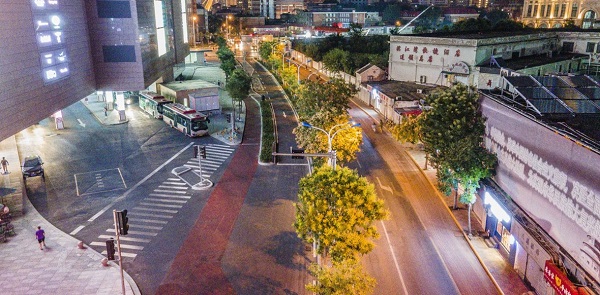 Urban road at a multimodal transport hub with sidewalks, bicycle lanes, median and pedestrian crossing in China. Image credit: Tianjin Urban Construction Design Institute
Urban road at a multimodal transport hub with sidewalks, bicycle lanes, median and pedestrian crossing in China. Image credit: Tianjin Urban Construction Design Institute Vehicles obstruct a sidewalk in China. Image credit: Greg Smith
Vehicles obstruct a sidewalk in China. Image credit: Greg Smith Village street in England, UK. Image credit: Monica Olyslagers
Village street in England, UK. Image credit: Monica Olyslagers










